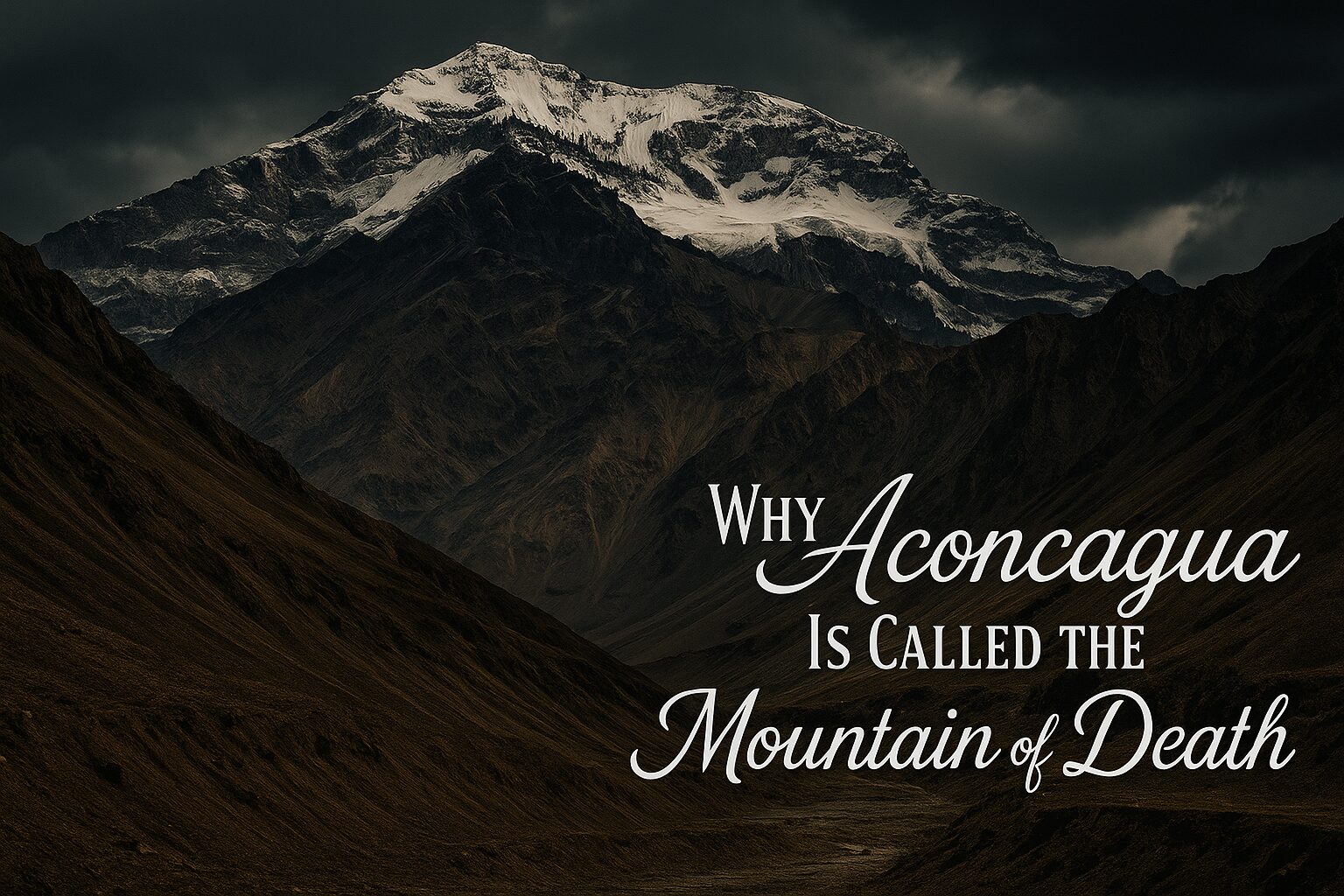Nestled in the Andes and known as the tallest mountain in South America, Mount Aconcagua is a symbol of adventure, challenge, and breathtaking altitude. Standing at an awe-inspiring 6,961 meters (22,838 feet), Aconcagua not only claims the title of the highest mountain in Argentina, but it also holds the distinction of being the highest peak in the Western Hemisphere.
Whether you’re a seasoned mountaineer or a curious traveler seeking to understand this colossal natural wonder, this guide offers a deep dive into Aconcagua’s height, danger, location, and what it takes to face “the mountain of death.”
The Location and Identity of Aconcagua
Located in western Argentina, in Mendoza Province, near the border with Chile, Mount Aconcagua is part of the Andes mountain range. If you’re wondering “where is Aconcagua?” or “where is Mount Aconcagua located in South America?”—the answer is in the heart of the Andes, a key part of Aconcagua Provincial Park.
Referred to as “Cerro Aconcagua” locally, this towering summit is considered the highest point of Argentina and the tallest mountain in the Andes. On a map, you’ll find it marked as the giant of the Southern Hemisphere, drawing thousands of climbers each year.
How High Is Mount Aconcagua?
- Elevation of Aconcagua: 6,961 m (22,838 ft)
- Highest peak in the Andes Mountains
- The tallest mountain in the Western Hemisphere
- Often mistakenly called a volcano (it is not)
This staggering Aconcagua elevation makes it a prime destination for high-altitude alpinism. When asking “how tall is Aconcagua?” or “what is the highest point in South America?”—Aconcagua is the answer.
Why Aconcagua Is Called “The Mountain of Death”
Though not a technical climb like Everest, Aconcagua poses serious challenges due to its extreme altitude and harsh weather. It has earned the chilling nickname “Death Mountain” or “Mountain of Death” because of its high fatality rate, with several climbers perishing each year from altitude sickness, weather exposure, and exhaustion.
Climbing Aconcagua may not require ropes or ice picks via the normal route, but its low oxygen levels and frigid temperatures often catch climbers off guard. Aconcagua deaths are sadly not uncommon—prompting many to question, “what mountain has the highest death rate?”
Aconcagua’s Deadly Reputation: Facts & Stats
- Altitude sickness is the #1 cause of fatality
- Over 30% of attempts fail due to health issues
- Average Aconcagua death rate: 3–4 climbers per year
- The nickname “Summit of Death” stems from extreme exposure
The weather on Mount Aconcagua can be brutal. Temperatures can drop below -30°C with strong winds making visibility nearly impossible. Hence, it’s crucial to time your expedition during the official Aconcagua climbing season, usually December through February.
Mapping the Journey: Mt Aconcagua Routes & Access
So, “where is Mt Aconcagua on a map?” or “what is the best route to reach the summit?”
There are two main routes:
- Normal Route (North Face) – non-technical but physically demanding
- Polish Glacier Route (East Face) – icy, technical, and suited for experts
Trekkers can access the mountain via Horcones Valley through Aconcagua Provincial Park. If you search “Mount Aconcagua map” or “Aconcagua mountain location and height,” you’ll see it stands almost alone—towering above surrounding peaks in stark majesty.
Aconcagua vs. Other South American Giants
- Aconcagua is taller than all other Andes mountains
- Taller than Peru’s Huascarán (6,768 m) and Ecuador’s Chimborazo
- Frequently compared to Mt Kilimanjaro, though Kilimanjaro is shorter (5,895 m) but has a similar death rate due to tourism traffic
Many confuse Aconcagua with a volcano, but it’s actually a fold mountain, not formed by volcanic activity.
Tips for Climbers: Prepare for the Ascent
Health & Safety
- Acclimatization is essential—spend 2–3 days at base camp
- Hydrate frequently, eat energy-rich foods
- Be aware of symptoms of altitude sickness
Gear Up Wisely
- Layered cold-weather clothing
- Crampons and poles (for icy patches)
- GPS, headlamp, and proper communication gear
Before climbing, it’s wise to study Mount Aconcagua weather forecasts and choose local guides familiar with the mountain.
Myths, Mysteries & Meaning
The Aconcagua mystery has fascinated travelers for decades. Some locals believe it’s protected by ancient spirits; others call it “the mountain dead” because of its history.
Regardless of tales, it remains a bucket-list peak for mountaineers worldwide and a symbol of Argentina’s natural might.
Final Word from The Inspiring Insight
Aconcagua is much more than just a towering summit—it’s a testament to nature’s extremes. Its commanding height, dangerous conditions, and breathtaking scenery make it both feared and admired.
For anyone seeking to understand the tallest peak in South America, whether as a traveler or adventurer, Aconcagua offers lessons in endurance, humility, and awe. Let this journey be your inspiration.
Brought to you by The Inspiring Insight – your compass to the world’s most powerful stories.




